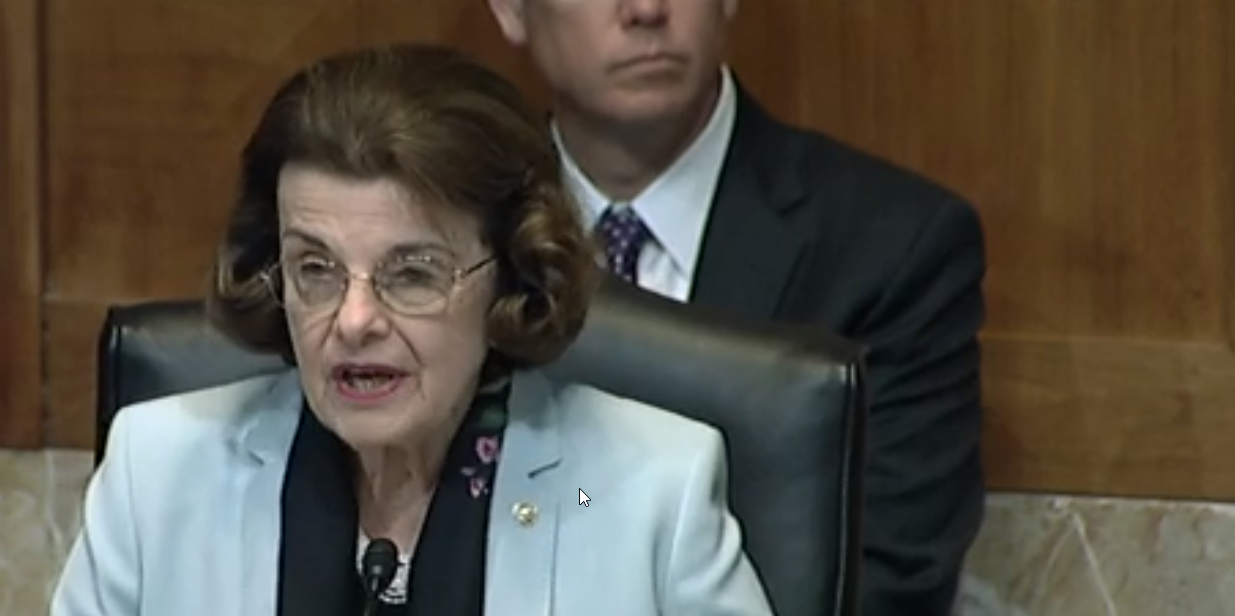
WASHINGTON — The National Nuclear Security Administration (NNSA) can only wait five to seven more years before beginning a potentially costly life-extension program on the megaton-class B83 gravity bomb, a senior agency official said here Wednesday in a budget hearing.
Sen. Dianne Feinstein (D-Calif.) coaxed the estimate out of Charles Verdon, deputy administrator for NNSA defense programs, during a hearing of the Senate Appropriations energy and water subcommittee.
Feinstien, ranking member of the panel that writes the Senate’s first draft of the annual energy budget bill covering the NNSA, firmly opposes the B83, which on Wednesday she called “dangerous and unnecessary.”
In its 2018 Nuclear Posture Reivew, the Donald Trump administration proposed reversing the Barack Obama administration’s decision to retire the B83 and replace it — according to estimates from the Washington-based nonprofit Federation of American Scientists — with some 480 B61-12 gravity bombs. The NNSA is creating B61-12 from four separate versions of the old B61.
According to the Nuclear Posture Review, the NNSA will keep B83 in warm storage “at least until there is sufficient confidence in the B61-12 gravity bomb that will be available in 2020.”
The NNSA quantified the expense of this about-face for the first time in the 2020 budget request released in March. The agency wants more than $50 million for B83 stockpile systems in 2020. That is about 45% more than the 2019 budget and more than double what the agency had previously forecast it would seek for the weapon in the budget year beginning Oct. 1.
“What is that for?” Feinstein asked senior NNSA officials in Wednesday’s hearing.
“We’ve upped the surveillance on [B83] in order to meet the annual assessment requirements associated with … keeping it in the stockpile longer,” Verdon said.
California’s senior senator asked Verdon if the Pentagon wanted to keep the B83 in the NNSA’s active stockpile because its destructive yield was potentially so much greater than the B61.
Verdon said the Defense Department decision was “based on their need for targeting: what they need for targets that they’re provided that they have to hold at risk.”
“The B83-1 and B61-11 gravity bombs can hold at risk a variety of protected targets,” the 2018 Nuclear Posture Review reads. “As a result, both will be retained in the stockpile, at least until there is sufficient confidence in the B61-12 gravity bomb that will be available in 2020.”
The NNSA’s 2020 budget report did not detail exactly how the B83’s maintenance regime and schedule had changed because of the review, but the budget request did say that the review will make certain activities more expensive in fiscal 2020.
Among these are limited life component exchanges for the bomb, according to the budget request. Limited life components include, among others, the weapon’s bottle of tritium gas: a radioactive hydrogen isotope that increases nuclear yields.
The Nuclear Posture Review also changed the requirements for: B83 disassembly and inspection at the Pantex Plant in Amarillo, Texas; laboratory tests of the various systems that make B83 detonate when required, and not detonate when not required; flight tests in which carrier aircraft drop instrumented, mock versions of the B83; and evaluation of the bomb’s components and materials, including non-nuclear components.
When Feinstein asked how much a full B83 life-extension program, beyond this increased maintenance regime, would cost, Verdon said he did not have an estimate on hand.
“We’d have to come up with the what the total number is,” Verdon said.
For scale, the NNSA estimates the B61-12 program — which Feinstein supported in part because it was to end the B83’s time in the stockpile — will cost about $8.3 billion and take until fiscal 2025 to complete. That is according to NNSA’s 2019 Stockpile Stewardship and Management Plan, published in October.
The B61-12 estimate includes some $650 million in costs book-kept outside the B61-12 life-extension budget. Those costs reflect technology developed not only for B61-12, but for other weapons, according to the latest Stockpile Stewardship and Management Plan .
The NNSA started development and engineering on the B61-12 life-extension program in 2012, but started studying an upgrade for the aged gravity bomb prior to 2010.